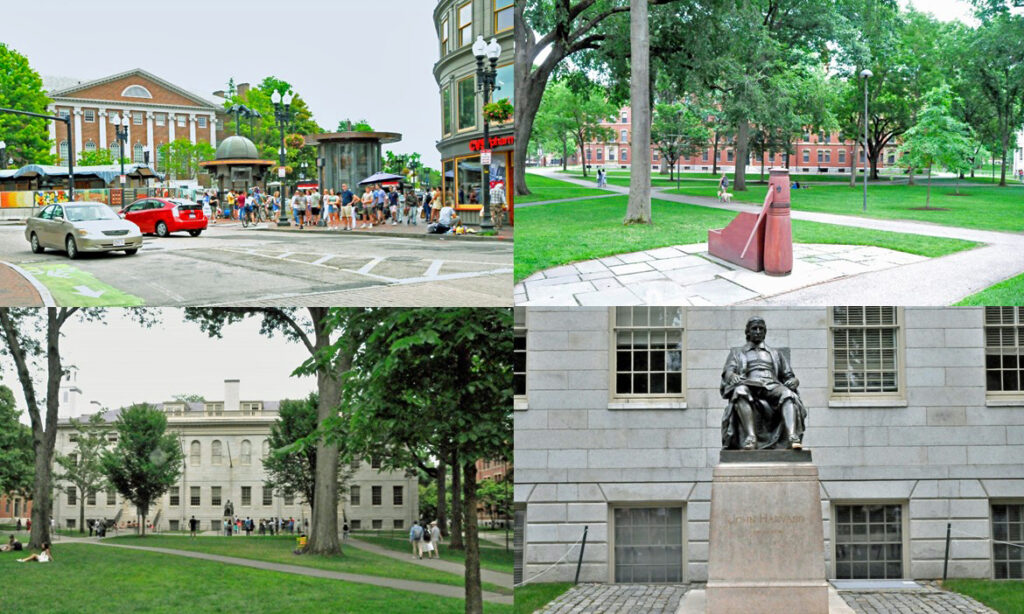Today, on our return from Cape Cod, we stop by Harvard University, where I studied fifty years ago.
In 1636, the General Court of the Massachusetts Bay Colony appropriated £400 to establish “Newe College,” the first institution of higher education in the colonies, with a goal of training Puritan ministers. The college was located in Newe Town, a new settlement along the Charles River, now known as Cambridge, about three miles northwest of Boston. In 1638, John Harvard, a recent immigrant from England, died childless and left £780, half of his estate, and his 400-volume library to the college, subsequently renamed “Harvard College” in his honor. President Charles W. Eliot, who served between 1869 and 1909, eliminated the Christian orientation of Harvard, creating a modern research university. During Eliot’s term, Harvard dedicated a bronze statue of a seated John Harvard with a book in his lap, his face based on that of a Harvard student. Since its founding, Harvard graduates have had an important impact on the country. Eight Harvard graduates have become presidents of the United States, 21 have become justices of the Supreme Court and 161 have won Nobel Prizes. Harvard living graduates currently include 188 billionaires, more than twice as many as second-place Stanford.
Today, Harvard University is among the world’s preeminent educational institutions. Its main campus comprises 209 acres in Cambridge. The center of the campus is Harvard Yard, the oldest part of the university, containing most of the first-year dormitories and Harvard’s most important libraries, collectively including more than 20 million items. The statue of John Harvard now sits in Harvard Yard in front of University Hall. Seeking good luck, visitors rub the toe of his left boot, making it perpetually shiny. Eight million people each year visit nearby Harvard Square, a bustling center of eating, public discourse and culture.
